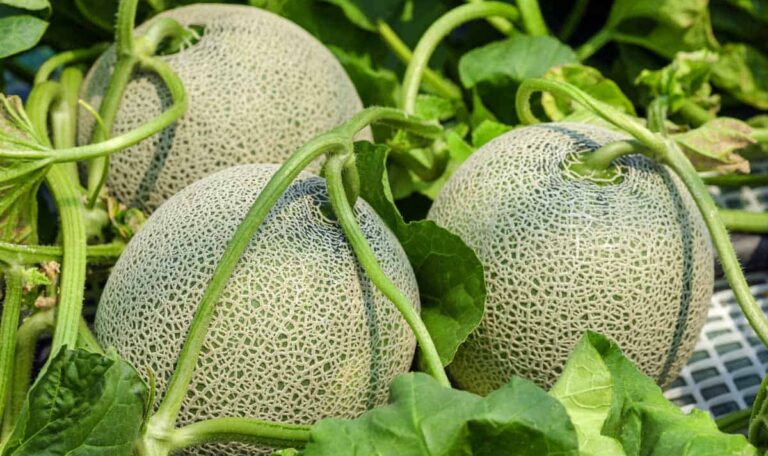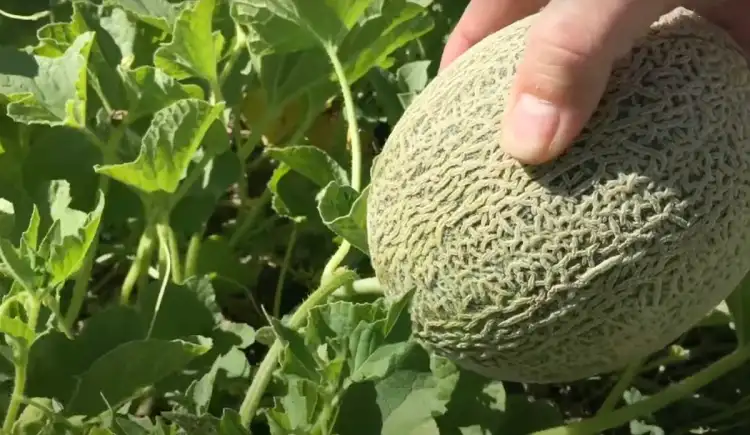Cantaloupe, also known as muskmelon or rockmelon, is a delicious and nutritious fruit that thrives in warm climates. To ensure a bountiful harvest of sweet and juicy cantaloupes, follow these expert tips backed by horticultural bodies and academic experts.
Choose the Right Location
Select a sunny location for planting cantaloupes, as they require plenty of sunlight to thrive. Ensure the soil is well-drained and rich in organic matter. Avoid areas prone to waterlogging, as excess moisture can lead to root rot.
Expert Tip: The University of California Cooperative Extension recommends planting cantaloupes in well-drained sandy loam soil with a pH between 6.0 and 6.5.
Start with Quality Seeds or Seedlings
Choose high-quality cantaloupe seeds or seedlings from reputable suppliers. Look for varieties suited to your climate and growing conditions. Start seeds indoors several weeks before the last frost date in your area, or purchase healthy seedlings from a nursery.
The United States Department of Agriculture (USDA) Agricultural Research Service provides a list of recommended cantaloupe varieties for different regions.

Provide Adequate Watering
Cantaloupes require consistent moisture throughout the growing season, especially during flowering and fruit development. Water deeply to encourage root growth and prevent shallow rooting. Use drip irrigation or soaker hoses to deliver water directly to the root zone and avoid wetting the foliage.
The National Gardening Association recommends providing 1 to 2 inches of water per week, adjusting based on weather conditions and soil moisture levels.
Implement Proper Mulching
Apply a layer of organic mulch, such as straw or shredded leaves, around cantaloupe plants to conserve soil moisture, suppress weed growth, and regulate soil temperature. Mulching also helps prevent soil-borne diseases and keeps the fruits clean and free from soil splashes.
The University of Florida IFAS Extension advises mulching with black plastic to warm the soil and promote early growth in cooler climates.
Support and Train Vines
Cantaloupe plants produce long, trailing vines that benefit from support and training. Use trellises, cages, or A-frames to lift vines off the ground, improve air circulation, and prevent fruit rot. Gently guide vines along the support structure, taking care not to damage tender stems or fruits.
The University of Illinois Extension recommends using pantyhose or soft fabric strips to secure cantaloupe vines to trellises or stakes without causing injury.
Practice Proper Pruning
Regular pruning helps manage the growth of cantaloupe plants and promotes larger, healthier fruits. Remove excessive foliage and lateral shoots to improve air circulation and sunlight penetration. Prune away any diseased or damaged branches to prevent the spread of pathogens.
Clemson Cooperative Extension suggests removing the first flowers or early fruits to redirect energy towards vine and root development, resulting in higher yields later in the season.
Monitor for Pests and Diseases
Keep a close eye on cantaloupe plants for signs of pest infestation or disease. Common pests include aphids, cucumber beetles, and spider mites, while diseases such as powdery mildew and bacterial wilt can affect plant health. Use integrated pest management techniques and organic remedies to control pests and prevent the spread of diseases.
The University of Georgia Cooperative Extension recommends rotating cantaloupe crops with non-cucurbit plants to minimize disease buildup in the soil.
Harvest at the Right Time
Harvest cantaloupes at their peak ripeness for the best flavor and texture. Look for fruits with a sweet aroma, creamy-colored rind between the netting, and a slight softness at the blossom end. Use a sharp knife to cut the fruits from the vine, leaving a short stem attached.
- Rhode Island’s Favorite THC Infused Beverages - June 5, 2025
- THC Soda and Drink Options in Idaho - May 28, 2025
- Ohio’s Go-To THC Infused Beverages - May 28, 2025




